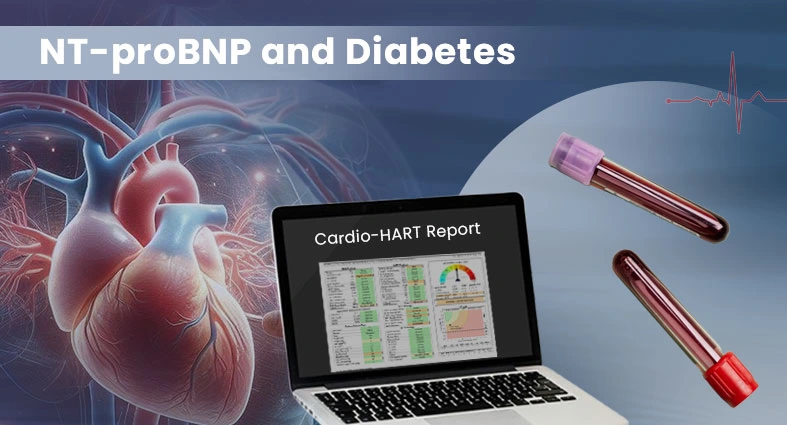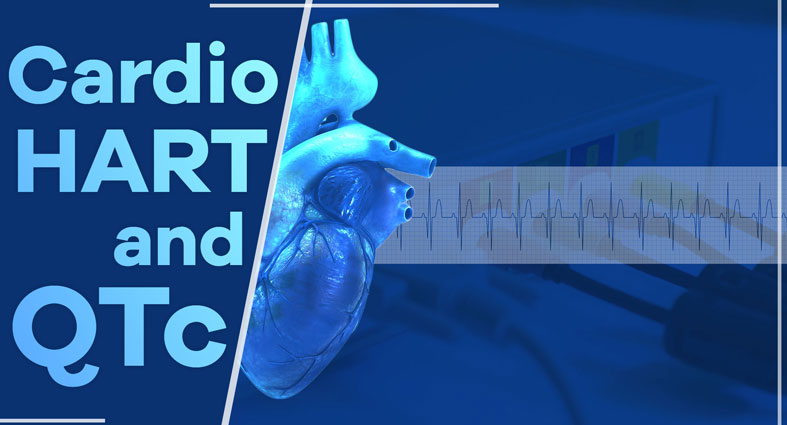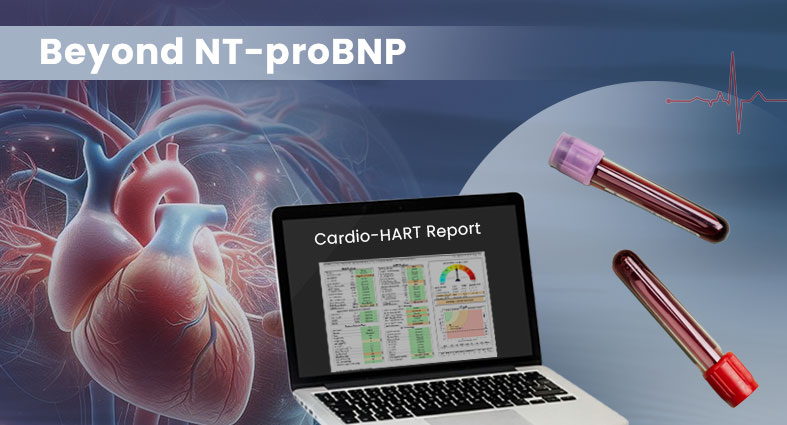NT-proBNP and diabetes are closely linked, and this interplay can alter test interpretation in heart-failure diagnosis. N-terminal pro B-type natriuretic peptide (NT-proBNP) is a biomarker widely used to assess heart failure (HF) and other cardiovascular conditions. It is the inactive fragment released when the heart produces brain natriuretic peptide (BNP), a hormone involved in fluid balance and blood pressure regulation.
Key takeaways (TL;DR): NT-proBNP and diabetes can distort biomarker interpretation via CKD; combine NT-proBNP with kidney function and imaging to reduce misdiagnosis.
NT-proBNP levels are often elevated in cases of heart failure, making it an important diagnostic tool in the management of heart-related conditions. However, research shows that diabetes and high blood sugar levels may influence NT-proBNP readings, leading to potential misdiagnosis, underdiagnosis, and complications in patients with diabetes and cardiovascular disease.
This article explores the relationship between NT-proBNP and high blood sugar levels in diabetes, the risks for patients, and the implications for clinical practice.
NT-proBNP and Diabetes: What the Biomarker Shows—and Where It Misleads
NT-proBNP is a biomarker used to aid in the diagnosis and monitoring of heart failure. When the heart is under stress, such as in the case of HF or myocardial infarction, it releases BNP. NT-proBNP is a more stable and easier-to-measure marker than BNP itself, which makes it a convenient and reliable indicator for assessing cardiac function.
Elevated levels of NT-proBNP correlate with disease severity, and testing is also used in atrial fibrillation, acute coronary syndrome, and pulmonary hypertension. Importantly, NT-proBNP levels may be influenced by age, sex, kidney function, and—as recent studies confirm—diabetes.
How Diabetes Influences NT-proBNP Levels
The flow below summarises how NT-proBNP and diabetes interact through kidney disease, elevating NT-proBNP and increasing misdiagnosis risk.

UK/EU context: In NHS pathways (NICE NG106), natriuretic peptide testing is combined with echocardiography; in people with diabetes—especially with CKD—interpret NT-proBNP cautiously and consider HFpEF.
The Role of High Blood Sugar
Diabetes, particularly when poorly controlled, is a major risk factor for cardiovascular disease. Patients with diabetes often present with higher NT-proBNP levels than non-diabetic individuals. Elevated blood glucose may increase cardiac stress even in the absence of overt HF, partially explaining these elevated values.
The Impact of Diabetic Kidney Disease (CKD)
Chronic kidney disease (CKD), a common complication of diabetes, further increases NT-proBNP due to impaired clearance. This can make NT-proBNP appear high even without cardiac pathology. Studies such as Pivetta et al. (2016) show that patients with diabetes and CKD present misleadingly elevated NT-proBNP readings, complicating diagnosis.
NT-proBNP Misdiagnosis and Underdiagnosis Risks in Diabetes
False Positives from Kidney Disease
Diabetic patients with renal dysfunction often show elevated NT-proBNP despite no clinical evidence of HF. This can result in unnecessary HF treatment or diagnostic imaging, increasing both patient burden and healthcare costs. This is a common pitfall when interpreting NT-proBNP and diabetes alongside reduced renal clearance.
False Negatives in Diabetic Patients with HF
Conversely, some diabetic patients with HF may not exhibit elevated NT-proBNP due to complex metabolic interactions. This underdiagnosis risks delaying treatment, worsening outcomes, and increasing hospitalisations.
Clinical Implications for Heart Failure Diagnosis in Diabetic Patients
The interplay between diabetes, NT-proBNP, and CKD underscores the risk of both over- and under-treatment. Misdiagnosis can expose patients to inappropriate therapies such as diuretics, while underdiagnosis delays life-saving interventions.
Healthcare providers must interpret NT-proBNP within a holistic context, factoring in:
- blood sugar levels,
- kidney function,
- comorbidities (hypertension, obesity), and
- clinical presentation.
Why Healthcare Providers Must Use a Holistic Approach
Relying solely on NT-proBNP testing in diabetic patients is risky; NT-proBNP and diabetes require a holistic read that includes kidney function and imaging. A combined approach—including clinical assessment, kidney function testing, and advanced diagnostics—improves accuracy.
New technologies such as Cardio-HART offer echocardiography-equivalent insights in primary care, complementing NT-proBNP and reducing misinterpretation.
Future Directions and Research Needs
More research is needed to:
- clarify the link between diabetes and NT-proBNP fluctuations,
- refine diagnostic thresholds in diabetic populations, and
- integrate device-based tools with biomarker testing for better accuracy.
NICE guideline NG106 on chronic heart failure also highlights the importance of additional diagnostic tools to support NT-proBNP interpretation.
Related reading
Conclusion: Balancing NT-proBNP with Clinical Context
The relationship between NT-proBNP and diabetes is complex. While NT-proBNP remains a valuable biomarker, elevated levels in diabetes may reflect metabolic or renal factors rather than heart failure alone.
To avoid misdiagnosis or underdiagnosis, clinicians should interpret NT-proBNP alongside other clinical findings. As diabetes prevalence rises, combining biomarkers with innovative diagnostics will be critical to ensuring timely, accurate, and patient-centred heart failure care.
References & Data Sources
1. Nakanishi, K., et al. (2019). “Impact of Diabetes Mellitus on NT-proBNP in Acute Heart Failure.” Journal of the American College of Cardiology, 74(1), 57–67. doi:10.1016/j.jacc.2019.03.463
2. Fadini, G.P., et al. (2020). “Diabetes and Heart Failure: Impact of NT-proBNP and Cardiac Function.” Cardiovascular Diabetology, 19(1), 35–44. doi:10.1186/s12933-020-01041-w
3. Ma, L., et al. (2021). “Diabetic Kidney Disease, NT-proBNP, and Their Association with Mortality in Patients with Diabetes.” Diabetes Care, 44(6), 1248–1255. doi:10.2337/dc21-0274
4. Sabatino, J., et al. (2021). “NT-proBNP and the Risk of Cardiovascular Events in Diabetic Patients.” Journal of Clinical Endocrinology & Metabolism, 106(12), 3792–3801. doi:10.1210/clinem/dgab667
5. Liu, L., et al. (2021). “The Role of NT-proBNP in Diabetic Cardiomyopathy: A Review of Recent Literature.” Frontiers in Endocrinology, 12, 655322. doi:10.3389/fendo.2021.655322
6. Khan, M.A., et al. (2022). “The Role of NT-proBNP as a Prognostic Biomarker in Diabetic Patients with Acute Myocardial Infarction.” Diabetes & Vascular Disease Research, 19(4), 242–250. doi:10.1177/14791641221107772
7. Jang, Y., et al. (2022). “Elevated NT-proBNP and Risk of Heart Failure in Diabetic Patients with Chronic Kidney Disease.” Diabetology & Metabolic Syndrome, 14(1), 62–69. doi:10.1186/s13098-022-00796-6
8. Murakami, M., et al. (2022). “NT-proBNP in Patients with Diabetes and Chronic Heart Failure: A Longitudinal Cohort Study.” Cardiology Research and Practice, 2022, 2909178. doi:10.1155/2022/2909178
9. Kim, H., et al. (2023). “Interaction Between Diabetes, Kidney Function, and NT-proBNP in Heart Failure Diagnosis.” Endocrine Journal, 70(1), 21–32. doi:10.1507/endocrj.EJ22-0453
10. Lee, J.H., et al. (2023). “Diabetic Cardiomyopathy: NT-proBNP and Its Diagnostic Challenges.” Frontiers in Cardiovascular Medicine, 10, 104212. doi:10.3389/fcvm.2023.104212
11. Bao, L., et al. (2023). “Effect of Glycemic Control on NT-proBNP Levels and Heart Failure Risk in Patients with Type 2 Diabetes.” Cardiovascular Diabetology, 22(1), 38–45. doi:10.1186/s12933-023-01783-1
12. Sandoval, Y., et al. (2023). “NT-proBNP as a Diagnostic Tool in Diabetic Patients: A Critical Review of Limitations and Alternative Biomarkers.” Frontiers in Endocrinology, 14, 840341. doi:10.3389/fendo.2023.840341
13. Wang, Z., et al. (2024). “Influence of Diabetic Kidney Disease on NT-proBNP and Its Clinical Significance in Heart Failure Diagnosis.” Clinical Journal of the American Society of Nephrology, 19(1), 56–65. doi:10.2215/CJN.04900523
14. Liu, Y., et al. (2024). “NT-proBNP, Glucose Metabolism, and the Risk of Cardiovascular Mortality in Diabetic Patients: A Population-based Study.” Diabetes, Obesity and Metabolism, 26(2), 324-333. doi:10.1111/dom.14813
15. Gallo, L., et al. (2024). “Impact of Blood Glucose Control on NT-proBNP Levels and Heart Failure in Type 2 Diabetes.” American Journal of Cardiology, 176, 45-52. doi:10.1016/j.amjcard.2023.10.019





